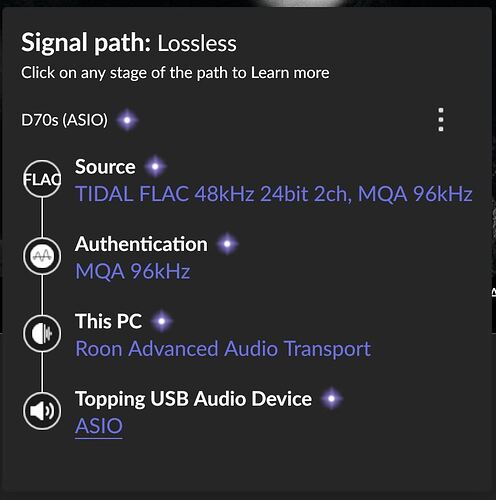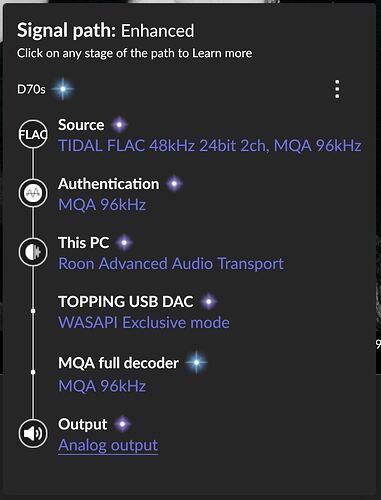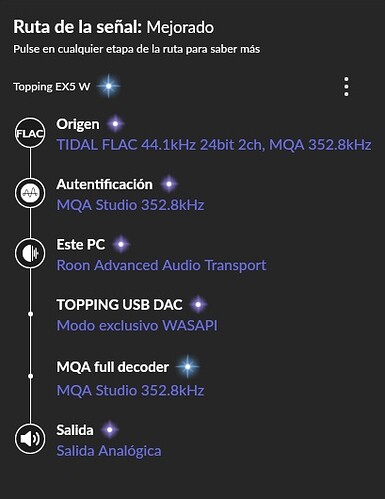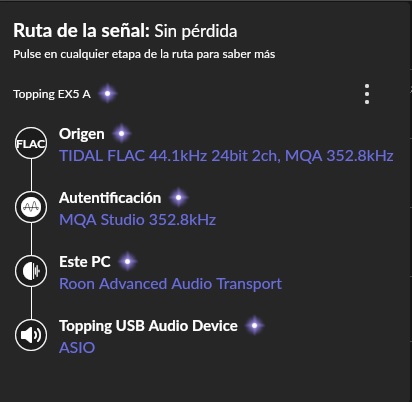Hello all,
I have been doing a bit of research regarding the comparisons between WASAPI and ASIO; not necessarily comparing which is “better,” but why I would enable one, versus the other and how that changes the signal path status.
My current DAC, the D70s, has (ASIO) drivers that were provided directly by the manufacturer, Topping.
I’ve spent some time during my listening sessions lowering the preferred buffer size, hoping to hear some substantial changes to the delivery, but it would be minimal (when compared to the WASAPI offering) at best.
Presently, I have my preferred buffer size set to 256 samples, but I suppose that I could go lower, as I’m sure my 9900K is capable of handling the workload.
Now, to my question and how to ask it:
I’ve noticed that when switching from WASAPI to ASIO the signal path changes from “Enhanced” to “Loseless.” I’ve been using TIDAL to access different MQA-based content for the sake of this example. This is relevant because I’m wondering if the MQA format is partially responsible for the signal path change.
For each selection, I’ve made sure to have the D70s as the decoder and renderer.
As a consumer, I see “Enhanced” and imagine a higher-quality output, especially considering the little “LED” indicator becomes a star that’s approaching supernova (when representing “Enhanced”).
I’m wondering if the “Enhanced” status is actually “better,” and why it’s only showing as such while using WASAPI?
Any insight would be greatly appreciated.
TL;DR — My D70s does not show up in the signal path while using ASIO (which is labeled as “Loseless”). However, it’s there for WASAPI (which is labeled as “Enhanced”). I want to make sure my DAC is still doing it’s job as the full MQA decoder.



